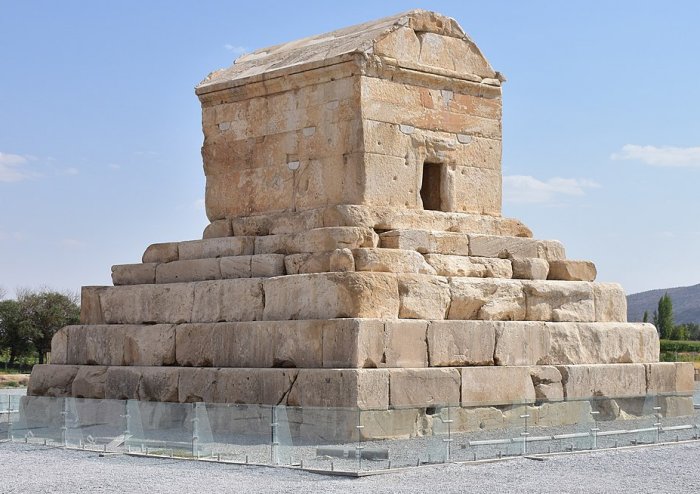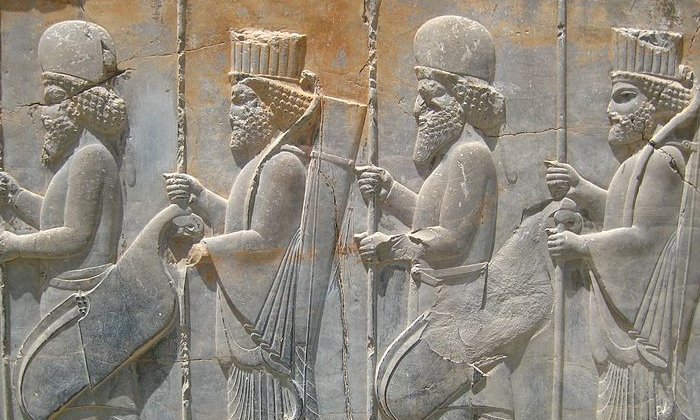Pasargadae: Capital Of Achaemenid Empire Destroyed By Alexander The Great
A. Sutherland - AncientPages.com - Today, Pasargadae are ruins of an ancient city in southwestern Iran, in the village of Mashhad-e Murghab, in the Zagros mountains, at an altitude of 1900 m, northeast of the city of Shiraz.
The fourth king of Anshan and the first king of the Achaemenid Empire, Cyrus II (d. 530 BC), also known as Cyrus the Great ordered the construction of Pasargadae during 559-530 BC, and in this city was located Cyrus’ tomb.
The city was the first capital of the Achaemenid Empire - one of the largest empires in history that covered approximately 5.5 million square kilometers and extended from the Balkans and Eastern Europe to the Hindus River in India.
In addition, this great empire was considered the first known for its cultural diversity of its people.
However, it lost its importance at the end of the sixth century in favor of Persepolis; 330 BC captured and plundered by Alexander III the Great. Some preserved remains of the once flourishing Pasargadae include the famous stone tomb of Cyrus II the Elder in the form of a four-sided eleven-meter high structure with a gable roof, ruins of the palace complex decorated with reliefs, a stone tower - a temple of fire, and 2 monolithic stone altars of fire.
The tomb of Cyrus the Great was also built in Pasargadae and was the most important monument in the city. Image credit: Bernd81 - CC BY-SA 4.0
In antiquity, the city was green. Eight or more dams regulated the river and stored water for irrigation.
Today, the region of Pasargadae is arid but it remains an important archaeological site. Archaeologists paid much attention to Achaemenid stone monuments, the role and design of the garden, and jewelry items.
Unique Techniques Used To Withstand Earthquakes
Not long ago, archaeologists found that Achaemenid engineers built the city of Pasargadae using unique structural techniques to withstand a strong earthquake that would today be classified as 7.0 on the Richter magnitude scale.
Inscription In Tomb of Cyrus the Great
No doubt, the most prominent monument in the city of Pasargadae, was the mausoleum of Cyrus.
Pasargad audience hall. Image credit: Zereshk - CC BY-SA 3.0
It has six broad steps leading to the sepulchre, the chamber of which measures 3.17 m long by 2.11 m wide by 2.11 m high and has a low and narrow entrance.
Though there is no firm evidence identifying the tomb as that of Cyrus, Greek historians tell that Alexander III of Macedon believed it really was. So, when Alexander looted and destroyed Persepolis, he visited the tomb of Cyrus and ordered one of his warriors, to enter the monument.
Inside, there was a golden bed, a table set with drinking vessels, a gold coffin, some ornaments studded with precious stones, and an inscription on the tomb.
No trace of any such inscription exists today and only Strabo reports that it read:
“Passer-by, I am Cyrus, who gave the Persians an empire and was king of Asia. Grudge me not, therefore, this monument…”
The Roman geographer Strabo of Amasia confirms in his ‘Geography’ that Pasargadae was built on the site where King Cyrus defeated the leader of the Medes, Astyages, in 550 BC. Building inscriptions found in the palace also confirm that Cyrus was indeed the builder of the town.
Persepolis stairs of the Apadana. Image credit: Taranis-iuppiter - CC BY-SA 3.0
After King Darius I the Great (522-486) built a new capital, Persepolis, Pasargadae remained an important place, and probably was some kind of religious capital of the Achaemenid empire. The tomb of Cyrus probably played a role in ceremonies taking place at Pasargadae.
Citadel And Audience Hall Among Oldest Monument Of Pasargadae
Pasargadae contained palaces and many other monumental structures; especially impressive and the oldest monument was a citadel Tall-i-Takht ('throne hill') that overlooked a garden ('paradise') in the south, and the palace complex as well. Built during the reign of Cyrus the Great, the citadel was never finished after his death in 530 BC.
Pasargadae represents the first phase of a specific Persian architecture which later found its full expression in the city of Persepolis.
Another historical structure is Apadana - the many columned audience hall that represented the splendid design by Darius I the Great (r. 522-486 BC). Apadana was part of king Cyrus' palace and was approached from the south-east. Apadana structures were influenced by several motifs from Phoenicia and Assyria and sculptures were created by the best stonemasons from Greek Ionia.
The Apadana structure is only mentioned in some building inscriptions; in one of Darius II (424-05 BC) and three of his son, Artaxerxes II (405-359 BC).
Pasargadae represents the first phase of this development into a specifically Persian architecture which later found its full expression in the city of Persepolis.
Written by – A. Sutherland AncientPages.com Senior Staff Writer
Copyright © AncientPages.com All rights reserved. This material may not be published, broadcast, rewritten or redistributed in whole or part without the express written permission of AncientPages.com
Expand for referencesReferences:
More From Ancient Pages
-
 Long-Lost Tomb Of Pharaoh Thutmose II Finally Found In Luxor, Egypt
Archaeology | Feb 19, 2025
Long-Lost Tomb Of Pharaoh Thutmose II Finally Found In Luxor, Egypt
Archaeology | Feb 19, 2025 -
 ‘Impossible’ Ancient Egyptian Visit Troubles Historians
Ancient Mysteries | Feb 11, 2021
‘Impossible’ Ancient Egyptian Visit Troubles Historians
Ancient Mysteries | Feb 11, 2021 -
 Magnificent New Trove Of Ancient Egyptian Artifacts And 250 Mummies At The Saqqara Necropolis
Archaeology | May 30, 2022
Magnificent New Trove Of Ancient Egyptian Artifacts And 250 Mummies At The Saqqara Necropolis
Archaeology | May 30, 2022 -
 Riddle Of The Hanging Gardens Of Babylon – Ancient Place Still Shrouded In Mystery – Part 1
Ancient Mysteries | Jun 7, 2019
Riddle Of The Hanging Gardens Of Babylon – Ancient Place Still Shrouded In Mystery – Part 1
Ancient Mysteries | Jun 7, 2019 -
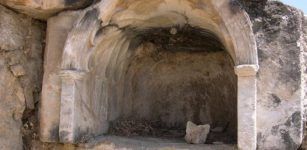 Plutonium: Dangerous Pluto’s Gate Was An Ancient Gateway To Hell At Hierapolis That Was Real
Featured Stories | Feb 18, 2017
Plutonium: Dangerous Pluto’s Gate Was An Ancient Gateway To Hell At Hierapolis That Was Real
Featured Stories | Feb 18, 2017 -
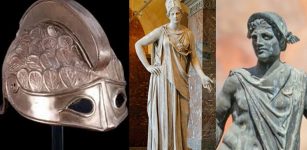 Magical Cap Of Invisibility Worn By Athena, Hades, Hermes, And Perseus
Featured Stories | Mar 25, 2019
Magical Cap Of Invisibility Worn By Athena, Hades, Hermes, And Perseus
Featured Stories | Mar 25, 2019 -
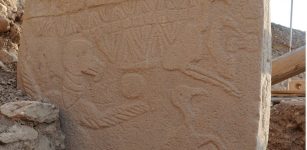 Evidence Of Neolithic Bird Hunting In Upper Mesopotamia
Archaeology | Sep 27, 2023
Evidence Of Neolithic Bird Hunting In Upper Mesopotamia
Archaeology | Sep 27, 2023 -
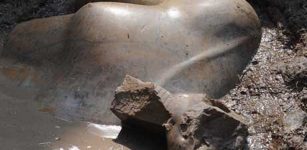 Two 19th Dynasty Royal Statues Unearthed At Ancient Site Of Heliopolis, Cairo, Egypt
Archaeology | Mar 11, 2017
Two 19th Dynasty Royal Statues Unearthed At Ancient Site Of Heliopolis, Cairo, Egypt
Archaeology | Mar 11, 2017 -
 Mesoamerican Rubber Ball Game Tradition Existed Earlier Than Thought
Ancient Traditions And Customs | Mar 17, 2020
Mesoamerican Rubber Ball Game Tradition Existed Earlier Than Thought
Ancient Traditions And Customs | Mar 17, 2020 -
 Kallikantzaroi: Naughty Nocturnal Goblins Emerge From Underground Only During Twelve Days Of Christmas
Ancient Traditions And Customs | Jan 3, 2025
Kallikantzaroi: Naughty Nocturnal Goblins Emerge From Underground Only During Twelve Days Of Christmas
Ancient Traditions And Customs | Jan 3, 2025 -
 Ancient Cities Built By Biblical Giants – Archaeological Evidence
Ancient Mysteries | Jun 2, 2018
Ancient Cities Built By Biblical Giants – Archaeological Evidence
Ancient Mysteries | Jun 2, 2018 -
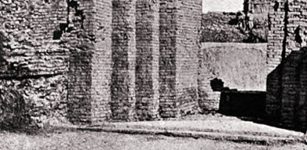 Sumerian City Of Girsu: Political, Religious Center With Large Archive Of Thousands Of Cuneiform Tablets
Civilizations | Jul 21, 2023
Sumerian City Of Girsu: Political, Religious Center With Large Archive Of Thousands Of Cuneiform Tablets
Civilizations | Jul 21, 2023 -
 Koshchey ‘The Immortal’: Strong And Wise Ruler Of Darkness In Slavic Mythology
Featured Stories | Jul 3, 2016
Koshchey ‘The Immortal’: Strong And Wise Ruler Of Darkness In Slavic Mythology
Featured Stories | Jul 3, 2016 -
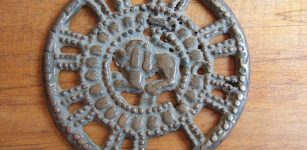 “Thogcha” – Thousand-Year-Old Tibetan Amulets And The Bon Culture
Ancient Technology | Dec 11, 2021
“Thogcha” – Thousand-Year-Old Tibetan Amulets And The Bon Culture
Ancient Technology | Dec 11, 2021 -
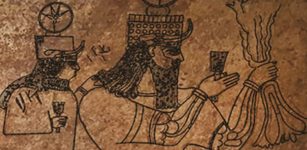 Unexpected Discovery Of Secret Underground Chamber Reveals Mysterious Neo-Assyrian Rock Panel
Archaeology | May 13, 2022
Unexpected Discovery Of Secret Underground Chamber Reveals Mysterious Neo-Assyrian Rock Panel
Archaeology | May 13, 2022 -
 Unraveling the mystery of the Rhynie Man
News | Aug 24, 2015
Unraveling the mystery of the Rhynie Man
News | Aug 24, 2015 -
 Face Of Queen Lady Cao Reconstructed – Unique Look At The First Known Female Ruler In Peru
Archaeology | Jul 10, 2017
Face Of Queen Lady Cao Reconstructed – Unique Look At The First Known Female Ruler In Peru
Archaeology | Jul 10, 2017 -
 On This Day In History: Chaldean Account Of The Deluge Translated And Presented For The First Time – On Dec 3, 1872
News | Dec 3, 2016
On This Day In History: Chaldean Account Of The Deluge Translated And Presented For The First Time – On Dec 3, 1872
News | Dec 3, 2016 -
 Bragi – Norse God Of Poetry, Eloquence, Music And Singing And Husband To Idun Who Protected Golden Apples
Featured Stories | Mar 17, 2018
Bragi – Norse God Of Poetry, Eloquence, Music And Singing And Husband To Idun Who Protected Golden Apples
Featured Stories | Mar 17, 2018 -
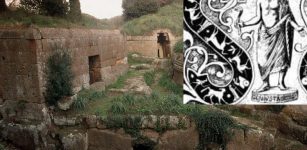 Tages: Etruscan Prophet Who Revealed Sacred Knowledge Before He Vanished
Featured Stories | Mar 1, 2016
Tages: Etruscan Prophet Who Revealed Sacred Knowledge Before He Vanished
Featured Stories | Mar 1, 2016


